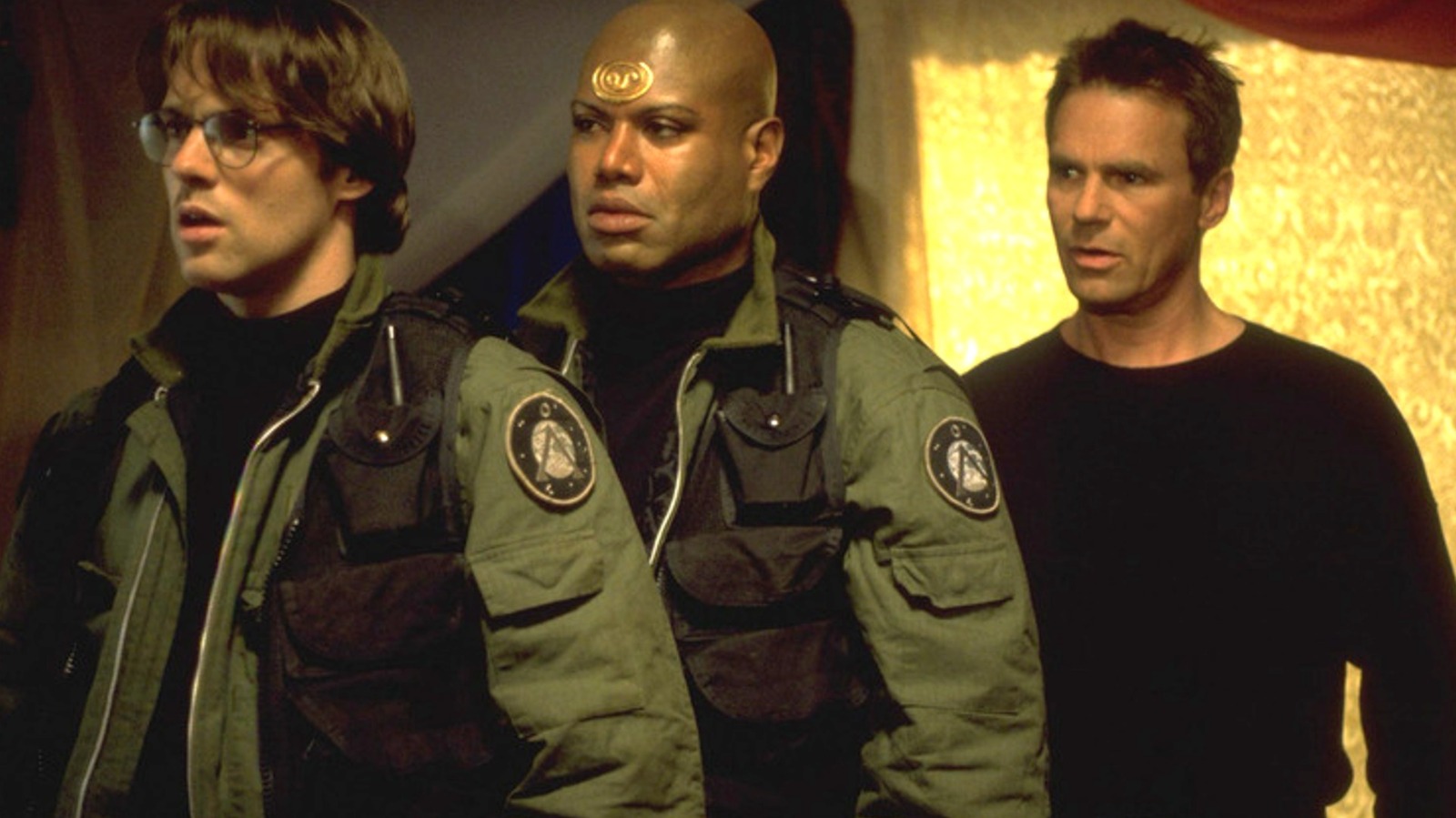especially the 10-season Syfy series “Stargate SG-1”) opted for a slightly different visual effect to portray the same energy vortex.
If you’ve seen “SG-1”, you might remember the enduring image of a massive burst of energy rushing through the Stargate right before it’s ready for intergalactic travel, taking on the appearance of a high-pressure water fountain. Samantha Carter (Amanda Tapping) playfully refers to this unstable vortex as Kawoosh, as it forms as soon as the Stargate gears up, rushing through the rings and devouring anything in its path before subsiding back to its source.
The science behind the formation of this unstable vortex can get a bit tricky, but it can be best understood as a safety measure that facilitates stable travel after it dissipates back into the pool. Later on, we learn that the Tok’ra carry out their funeral customs by dissolving the dead in the path of the vortex, as its high-pressure velocity disintegrates anything it touches. As the episodes progress, we are privy to how this phenomenon is perceived by different factions, such as when those trapped in a prison planet (mistakenly) believed that this vortex could be used to travel backwards through a Stargate device. Other versions of this unstable vortex are seen in the Ori-made Supergate, which creates an even greater, more intense whirlpool due to the immense amount of energy it uses to propel itself forward.
But how was this Kawoosh effect created without the use of CGI? As you can already guess, the process was more complicated than it seems, as confirmed by “The Making of Stargate,” a 1994 documentary that explains how this practical visual effect was first created in Emmerich’s “Stargate.”


